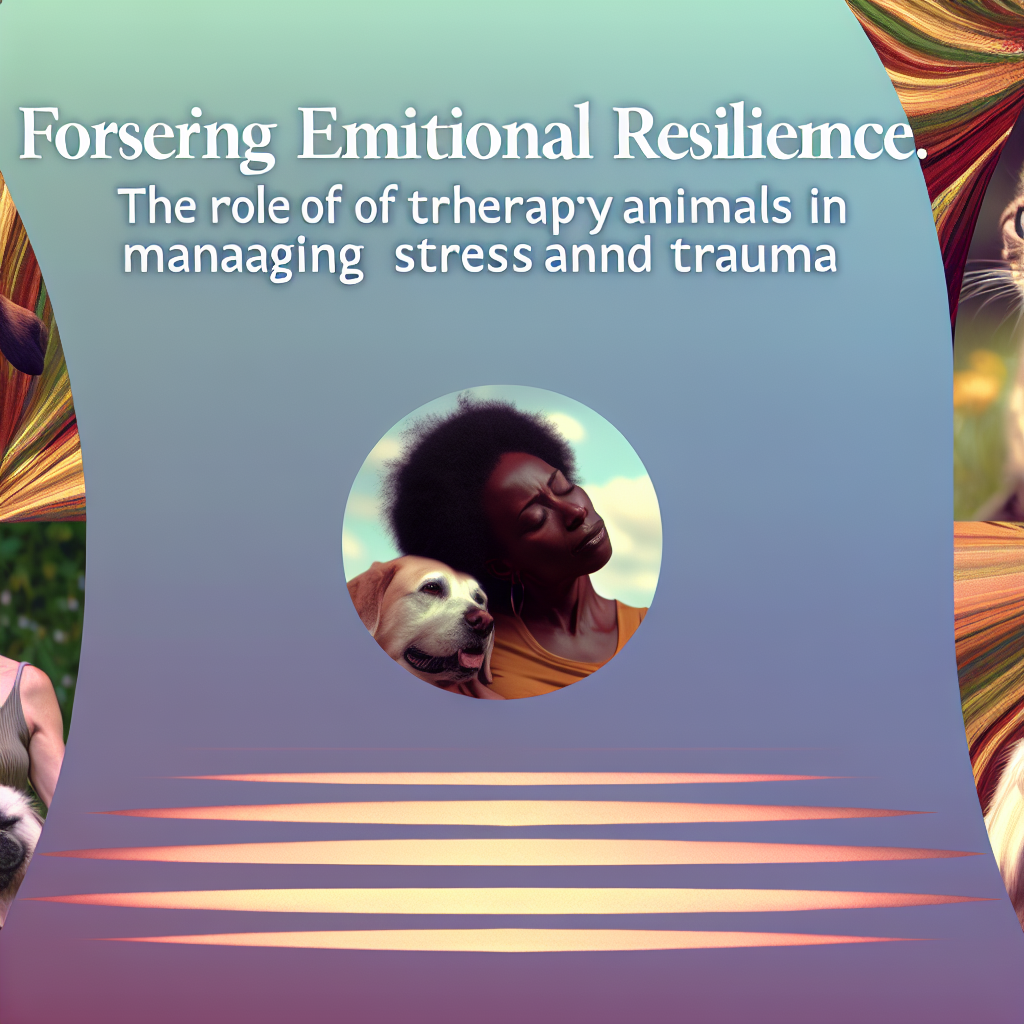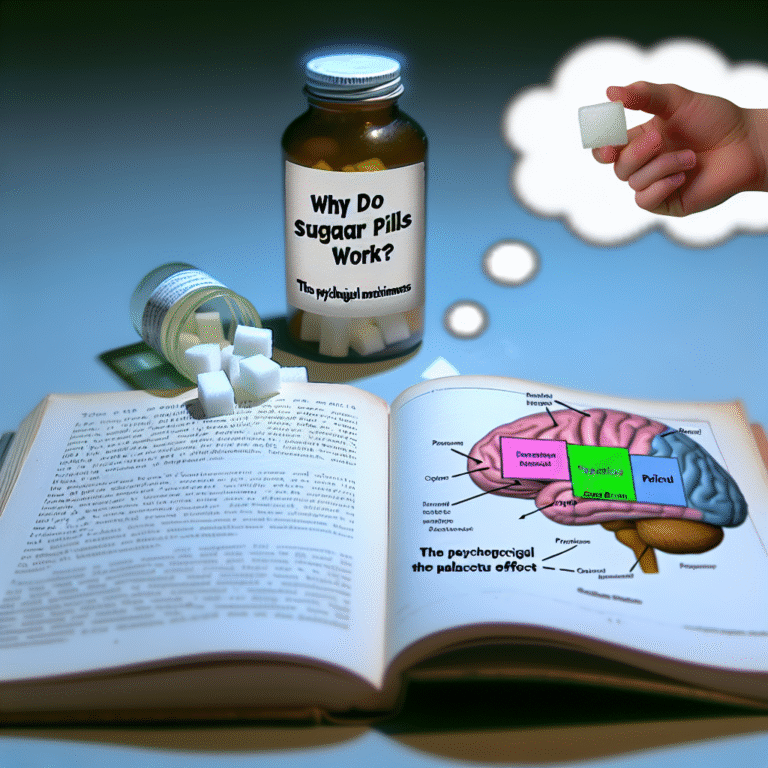
Fostering Emotional Resilience: The Essential Role of Therapy Animals in Managing Stress and Trauma
Introduction
In today’s fast-paced, increasingly complex world, stress and trauma have become prevalent challenges faced by individuals from all walks of life. Mental health issues stemming from these experiences often manifest in various forms, affecting emotional wellbeing and overall quality of life. Amidst this landscape, an unexpected ally has emerged—therapy animals. These compassionate companions are not merely pets; they play a crucial role in fostering emotional resilience and offering effective assistance for managing stress and trauma.
The Growing Need for Emotional Resilience
As mental health awareness rises, so does the understanding of emotional resilience—the ability to adapt and recover from adversity. Individuals facing trauma, anxiety, or stress must develop this resilience to maintain mental wellbeing. This article dives deep into Fostering Emotional Resilience: The Role of Therapy Animals in Managing Stress and Trauma, examining how these remarkable creatures provide profound emotional support.
Understanding Therapy Animals
Definition and Purpose
Therapy Animals are specially trained animals that provide comfort, support, and affection. Unlike service animals, they do not perform specific tasks for individuals with disabilities. Their primary role is to soothe and uplift those who need emotional support.
The Science Behind Animal-Assisted Therapy
Animal-assisted therapy (AAT) combines traditional therapeutic practices with the companionship of animals. Research shows that interacting with animals can reduce stress hormones, lower blood pressure, and stimulate the production of feel-good neurotransmitters. These physiological changes are essential in Fostering Emotional Resilience: The Role of Therapy Animals in Managing Stress and Trauma.
How Therapy Animals Foster Emotional Resilience
Emotional Support Through Unconditional Love
The unconditional love exhibited by therapy animals creates a safe space for individuals battling stress and trauma. This emotional connection promotes feelings of belonging and acceptance, both vital for emotional resilience.
Case Study: The Power of a Canine Companion
In a 2022 study conducted at a rehabilitation center, patients with PTSD were paired with therapy dogs. Results indicated a 60% decrease in anxiety and increased emotional openness among participants. The unconditional love from these dogs provided vital support, illustrating Fostering Emotional Resilience: The Role of Therapy Animals in Managing Stress and Trauma in practice.
Creating Safe Spaces
Therapy animals offer a non-judgmental presence, often making it easier for individuals to express their emotions. This is crucial in therapy settings, where vulnerability is often necessary for healing.
The Mechanisms Behind Therapy Animals’ Support
Physical Benefits
- Reduced Cortisol Levels: Interacting with therapy animals is known to significantly lower cortisol, the stress hormone, promoting relaxation and a sense of calm.
- Heart Rate and Blood Pressure Regulation: Research indicates that simply petting a therapy animal can lead to decreased heart rate and lower blood pressure, contributing to lower stress levels overall.
Psychological Benefits
- Enhanced Mood: The companionship of animals stimulates the release of serotonin and dopamine, improving mood and fostering emotional resilience.
- Increased Motivation: In therapy sessions, therapy animals often encourage individuals to engage more deeply in their healing process, enhancing their motivation to work through their challenges.
Table: Benefits of Therapy Animals in a Therapeutic Setting
| Benefit | Description |
|---|---|
| Reduced Anxiety | Pets can decrease feelings of anxiety and stress. |
| Enhanced Connection | Animals help create bonds between individuals and therapists. |
| Improved Focus | Interaction with animals can lead to improved focus and attention in therapy. |
| Promotes Empathy | Caring for animals fosters empathy and compassion. |
Real-World Applications of Therapy Animals
Therapy Animals in Schools
Recent initiatives have integrated therapy animals into school environments to assist students in coping with stress and anxiety.
Case Study: The Comfort of a Classroom Canine
At Maplewood High School, a therapy dog named Max has proven to be an invaluable resource. Teachers report a substantial increase in student engagement and a notable decrease in behavioral problems. Max’s presence has transformed the school environment, showcasing Fostering Emotional Resilience: The Role of Therapy Animals in Managing Stress and Trauma in an educational setting.
Therapy Animals in Hospitals
Hospitals have begun implementing therapy animal programs to ease the emotional strain on patients.
Case Study: Pawsitive Care in Pediatric Wards
In a children’s hospital in Boston, a therapy cat named Luna visits pediatric patients regularly. Medical staff observed a remarkable reduction in pain perception and anxiety levels during treatments. This case exemplifies how therapy animals can significantly impact patient recovery, again reinforcing the principle of Fostering Emotional Resilience: The Role of Therapy Animals in Managing Stress and Trauma.
The Challenges and Considerations
Limitations of Therapy Animals
While therapy animals have proven effective, there are considerations to account for:
- Individual Preferences: Not everyone is comfortable around animals, which may hinder the therapeutic effects.
- Allergies: Allergies to animals can pose a barrier for some individuals.
Ensuring Proper Integration
To maximize benefits, it is crucial that therapy animals are properly trained and integrated into therapeutic settings. This ensures that both the animal and the individuals receiving support can thrive.
Conclusion
Fostering emotional resilience through the innovative use of therapy animals presents a promising direction in mental health and therapy. These dedicated companions not only provide emotional support but also help individuals manage stress and trauma effectively. As the understanding of mental health evolves, so does the necessity for creative and compassionate solutions like therapy animals.
Actionable Insights
For those interested in exploring therapy animals, consider these steps:
- Research Local Therapy Animal Programs: Discover available resources and programs in your community.
- Engage in Volunteer Opportunities: Join programs that involve therapy animals to understand their impact.
- Consult Professionals: Talk to mental health professionals about incorporating therapy animals into your healing journey.
FAQs
1. What type of animals can be therapy animals?
Dogs and cats are the most common, but rabbits, birds, and even horses can serve as therapy animals.
2. How do I find a therapy animal program in my area?
You can start by searching online for local animal-assisted therapy programs or organizations.
3. Are therapy animals the same as emotional support animals?
No, therapy animals are trained to assist multiple individuals in various settings, while emotional support animals provide comfort to a single person.
4. Do therapy animals require formal training?
Yes, therapy animals must undergo specific training to ensure they can operate effectively in therapeutic environments.
5. Can therapy animals help with chronic conditions?
Yes, therapy animals can provide support for individuals with chronic illnesses by alleviating stress and anxiety related to their conditions.
With its profound implications, Fostering Emotional Resilience: The Role of Therapy Animals in Managing Stress and Trauma is not just a theoretical concept but a vital part of modern mental health practices. As research continues to unveil the benefits of these incredible animals, the hope is that more individuals will integrate this support into their paths toward emotional resilience and healing.














